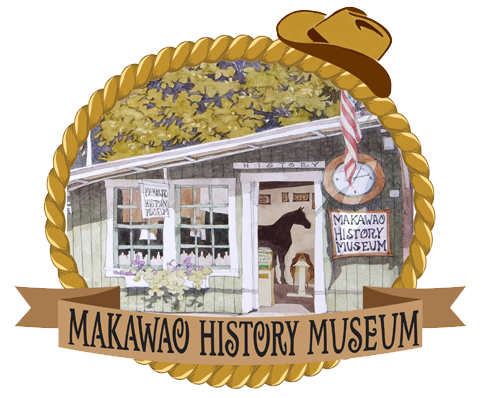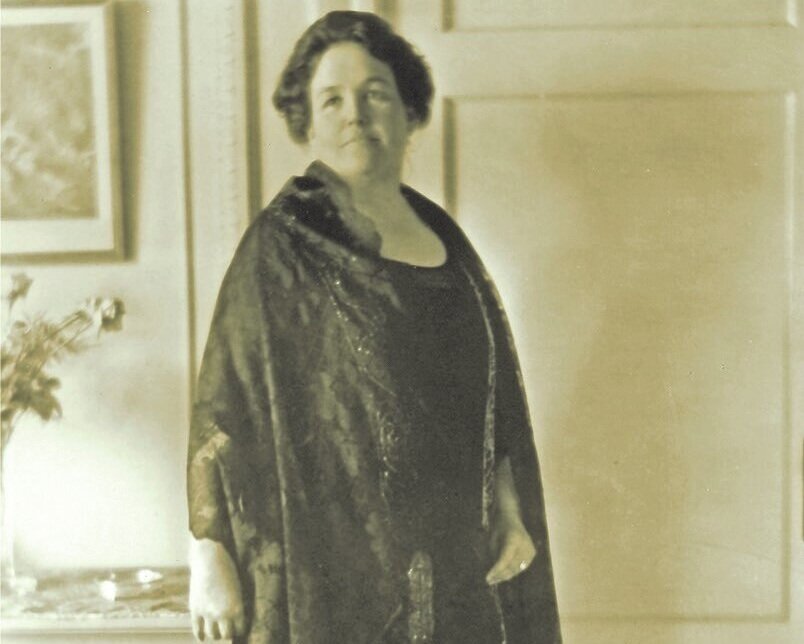Honoring Three Upcountry Women
A Women’s History Month Exhibit
Makawao History Museum
March 1-31, 2020
In honor of Women’s History Month, Makawao History Museum presents the following virtual vignettes about the lives of three upcountry women: Ethel Baldwin, leader of the local women’s suffrage movement; Patsy Mink, the first woman of color elected to the US Congress; and Gordean Bailey, Miss Hawaii 1959 and a kumu hula today.
Ethel Baldwin
Born into a distinguished Honolulu family, Ethel Smith Baldwin was the granddaughter of Congregational missionaries who had arrived in Hawai’i in 1842. In 1897, at the age of seventeen, Ethel married Henry “Harry” Alexander Baldwin, also a grandchild of missionaries. Throughout their lives, the couple carried on their families’ rich traditions of leadership and service.
They established their first home on Maui in Hamakuapoko and had three children, Leslie (1898), Jared (1899) and Frances (1903). Ethel described those times as “horse and buggy days”—an understatement, to say the least. The roads were terrible; going from Hamakuapoko to Wailuku was an all-day affair. The trip to Honolulu required a buggy ride to Wailuku, a change of horses, then traveling around West Maui’s mountain to catch a boat at Lahaina Harbor.
Automobiles arrived in 1904 and there was telephone service, too, but no radio or movies. The community provided its own entertainment, and Ethel was an avid participant in the island’s theatricals, socials and dances. Yet she still found time to take a leading role in a host of worthy causes. She established Kula Sanitarium, and in 1919 was unanimously elected to head the women’s suffrage movement on Maui, establishing clubs throughout the island, even remote Ke’anae. In the 1920s, Ethel led the Women’s International League for Peace and Freedom, and in 1922 witnessed national politics firsthand when Harry was elected to complete the deceased Prince Jonah Kuhio Kalaniana’ole’s term as Hawai’i’s sole representative in Congress.
She returned to Maui, and to her many worthy causes, including the Maui Humane Society, the Hawaiian Missionary Children’s Society, Makawao Union Church, Maui Girl Scouts, Makawao Ladies’ Aid Society, and the Maui Outdoor Circle. An accomplished silversmith, Ethel opened her home to fellow artists; today Hui No’eau is a visual arts center offering classes and hosting exhibits for the entire community. The most succinct description of Ethel Baldwin is the one inscribed on her tombstone: “She loved in deed and truth.”
Patsy Mink
The little plantation town of Pa`ia, on Maui’s North Shore, seems an unlikely birthplace for the woman who became a trailblazer for equality and justice on the national stage—unlikely, unless you knew Patsy Takemoto Mink. A third-generation Japanese-American, Patsy was the daughter of Suematsu Takemoto, a civil engineer who was the first Japanese-American to graduate from the University of Hawai`i. Her junior year, Patsy was elected student body president of Maui High School—an accomplishment made more significant because her win occurred just one month after Japan’s attack on Pearl Harbor attack. The following year, Patsy graduated as valedictorian.
Mink earned a BA from UH in 1948, majoring in chemistry and zoology, but was denied admission to every medical school she applied to. Medicine’s loss was the legal profession’s gain. Patsy graduated from the University of Chicago Law School in 1951. That same year she married John Mink, a fellow UC graduate, and with her new husband, returned to Hawai`i, becoming the state’s first woman of Japanese-American ancestry to practice law. Patsy was elected to Hawai`i’s House of Representatives in 1956. Eight years later, she made history as the first woman of color elected to the U.S. House of Representatives, serving there for 12 terms.
After an unsuccessful bid for the Senate in 1977, Mink was appointed Assistant Secretary of State by President Jimmy Carter.
Perhaps Mink’s most significant achievement took place during her term in Congress, when she and Rep. Birch Bay co-authored the Title IX Amendment of the Higher Education Act, the legislation that brought academic and athletic equity to America’s educational institutions. After her death in 2002, it was renamed the Patsy T. Mink Equal Opportunity in Education Act. On November 24, 2014, Patsy Mink was awarded a posthumous Presidential Medal of Freedom by President Barak Obama.
Gordean Bailey
Pictures and text excerpted with permission from Lehia Apana’s story “Island Royalty,” which appeared in the September-October 2017 issue of Maui No Ka `Oi Magazine.
In 1959, shortly after Hawai‘i became a state, Gordean made history as the first Miss Hawai`i at the Miss America pageant in Atlantic City. Miss Mississippi earned the crown, but fellow contestants voted Gordean Miss Congeniality. During her time as Miss Hawai‘i, glamour and luxuries flooded into her life: a custom wardrobe, magazine covers, a multi-city tour. She admits that she did it all for the money—the scholarship money, that is. She majored in education and taught at University Laboratory School and Punahou School in Honolulu.
For more than thirty years, as kumu hula (hula teacher) of Hālau Hula Wehiwehi O Leilehua, she has shared her Hawaiian culture and love for dance with countless students. And up in Kula, at her Bailey Farms Maui, she nurtures native plants like wauke for tapa, sixteen varieties of lehua, and maile, which she weaves into lei and sells locally. “I just love to see things blossom, whether it’s my plants or my students,” she says. “I’m still growing, too. I’m a teacher, but I’m a student forever.”










